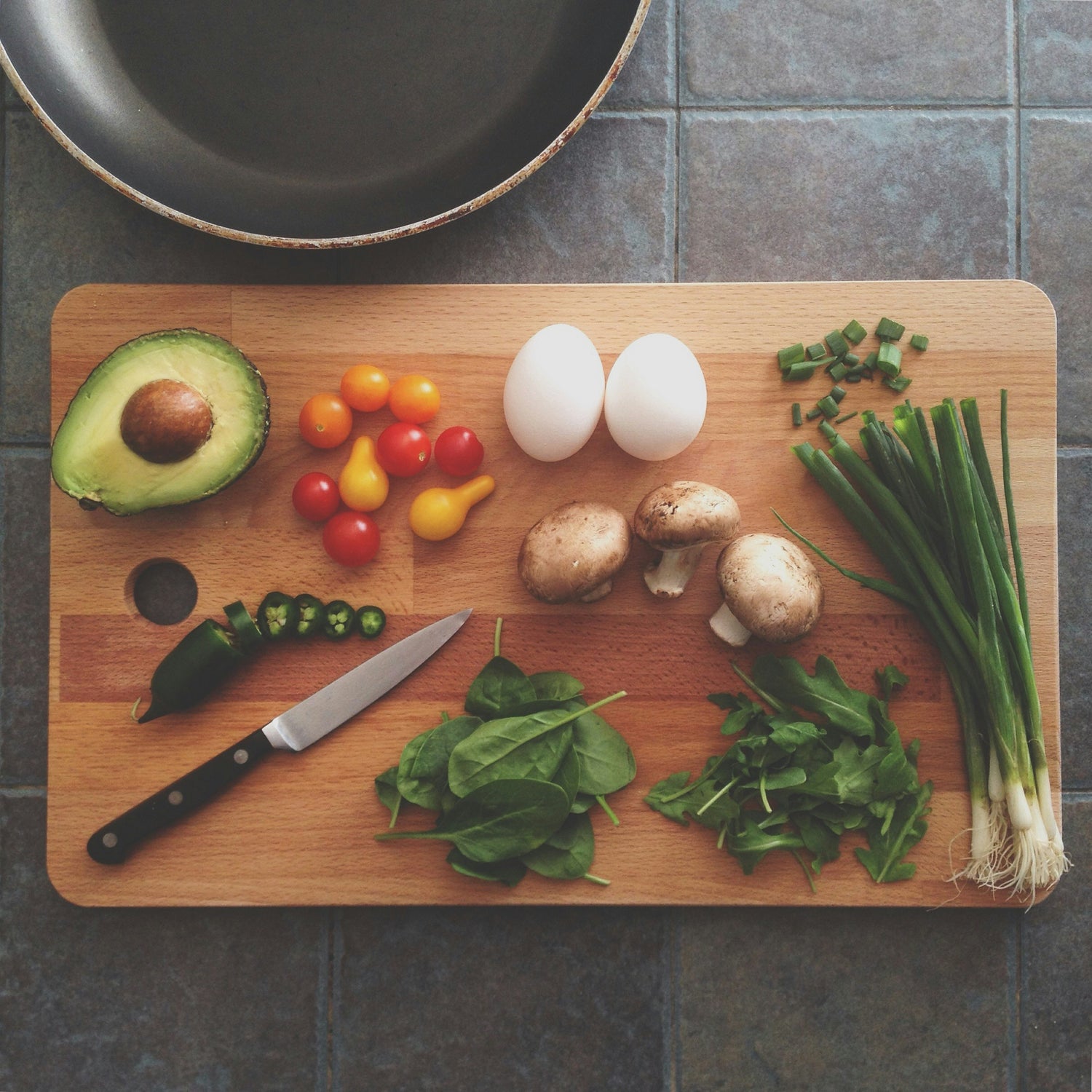It's Called Nrf2, It's Your Master Switch for Cellular Repair, And There Are Ways To Activate It
A diet rich in fruits and vegetables can dramatically reduce your risk for heart disease, diabetes, high blood pressure, cancer, and gastrointestinal disease, according to the Harvard School of Public Health. When the Harvard-based Nurses' Health Study and Health Professionals Follow up Study tracked the health and diets of nearly 110,000 individuals for 14 years, it was found that 8 or more servings of fruit and vegetables a day lowered the risk of heart attack and stroke by an astonishing 30% percent. Similarly, whole grains, nuts and fish benefit health and also significantly lower risk of what is termed "all-cause mortality."[1]
But have you ever wondered why? Just why do fruits, vegetables, nuts and whole grains offer such powerful health-promoting benefits? Why are they the crux of a longevity diet? The simple answer, of course, is that the cornucopia of nutritious, delicious foods available to us today are loaded with healthy antioxidants. And antioxidants quench free radical damage, helping to offset oxidative stress.
Your Secret and Potent Ally: The Nrf2 Switch
But it's not quite that simple, as it turns out. Our most powerful detoxification lies deep within, with a master antioxidant switch that is inside every cell of our body. It is called Nrf2 (pronounced Nurf-2, and short for nuclear factor [erythroid-2])–related factor 2) and it is so important it is found in all mammalian species. Nrf2 is an exquisitely sensitive cellular switch that, when turned on, regulates the activity of over 200 genes, almost all of them involved in either antioxidant defense or detoxification.[2] Nrf2 is capable of activating powerful protective genes and signaling molecules that are critical for our processing of drugs and toxins, for dampening inflammation, removing damaged proteins, and helping repair DNA.[3] The fact that it regulates so many diverse genes shows that it is critical to life. Nrf2 is found in all tissues of the body, and in especially high levels in the kidney and liver, our critical organs of detoxification. In fact, scientists are now exploring ways to enhance Nrf2 to help regenerate the kidney and liver by increasing levels of Nrf2.[4],[5] When Nrf2 is activated it can help mitochondria, the energy powerhouses inside our cells, increase energy production. By increasing the activity of certain genes, it can promote muscle repair and recovery. It increases the activity of the gene for glutathione reductase, the enzyme that helps return glutathione to its potent, reduced antioxidant state. Genes involved in our internal antioxidants, superoxide dismutase and catalase, are also increased by Nrf2.
How important is Nrf2? There are nearly 10,000 peer review papers on the activity and function of this master switch. It is likely that Nrf2 plays a protective role in lifespan and what is known as 'healthspan'— the period of life in which you are in the best health possible. Raising Nrf2 activity may help offset the onslaught of chemicals and toxins to which we are regularly exposed in 21st century life.
How Does Nrf2 Work?
Nrf2 is activated when a cell is under stress, and as soon as it is activated it moves into the nucleus of the cell, where it triggers the activity of numerous critical genes that churn out powerful antioxidants and detoxifying enzymes. When the acute stress has passed, Nrf2 leaves the nucleus of the cell, is broken down, and returns to low levels, 'waiting' for the next stressor. Stressors include all forms of oxidative stress, toxins, fasting, exercise—and also many of the molecules we think of as antioxidants. These molecules are in our most popular health-and-longevity foods, such as broccoli, grapes, berries, and spices. In other words, our own innate protective defenses can be activated by antioxidant molecules in fruits and vegetables.
Now here is the fascinating twist. Many of these antioxidant molecules actually work by serving as mild stressors that activate our Nrf2 switch. They are, essentially, very mild toxins, presenting just enough of a signal or trigger to activate Nrf2. These molecules—such as bitters, tannins, compounds like sulforaphane in broccoli or resveratrol in grapes—are actually generated by the plants to protect themselves from pathogens, predators, and even from harsh weather. Fruits, vegetables, nuts, seeds and grains have their own survival mechanisms. A grape stressed by the sun, wind or storms, by opportunistic fungi or blight, or by insect and animal predators, will start to produce extra resveratrol and protective tannins. Infection with common fungi has been shown to boost the resveratrol content of grapes. Resveratrol is, as we know, a well-regarded antioxidant studied for its potential cardioprotective effects.
Similarly, apple leaves infected with scab, an infection caused by a fungus, boast up to 20 percent more polyphenols. Japanese knotweed, an herbal with anti-inflammatory activity, has higher levels of resveratrol when infected with common fungi.
What this suggests is that fruits, vegetables, nuts, seeds and grains are serving as first line defenders, increasing protective compounds that, when we consume them, trigger our Nrf2 master switch. We have evolved together this way over aeons.
Three Simple Ways to Increase your Nrf2 Activity
1.Consider the Best of the Mediterranean or Okinawan Diets
It's a given that a diet rich in fruits, vegetables, nuts, seeds, whole grains, legumes contributes to health and longevity. But several traditional diets truly shine in this regard and are associated with health and longevity. The Mediterranean diet is one—a plant-centric cuisine consumed by Italians and Greeks decades ago. The diet is rich in olives and olive oil, which contain high levels of Nrf2 stimulating phenols and terpenes; as well as moderate amounts of red wine, high in resveratrol. The traditional diet of the Okinawans, who live on a group of islands in the Pacific, is thought to also increase longevity, as Okinawans boast many healthy centenarians (individuals who lived to 100 years or more). The Okinawan diet typically contains about seven servings of vegetables and one or two servings of grain per day. It is high in botanicals like turmeric and bitter melon, which are rich inphenolic nutrients. The purple sweet potato is an Okinawan staple, high in anthocyanins that give the potato its deep purple hue. Until about 1940, the purple sweet potato made up 40% of the Okinawan diet. Anthocyanins are potent Nrf2 activators. Okinawans have only a fifth the rate of cardiovascular disease breast and prostate cancer that Americans do, and less than half the rate of dementia commonly seen in the U.S.
2. Exercise Regularly
Both intensive bursts of exercise, as well as a program of regular exercise, are potent inducers of Nrf2. Regular exercise increases our endogenous antioxidant defenses.[6] In animal studies, a single session of exercise increases Nrf2 gene expression and Nrf2-dependent detoxification enzymes.[7] In humans, a single session of aerobic exercise increased Nrf2 in cells in both young and older adults, although only younger adults showed an increase in Nrf2 in the nucleus of cells.[8] In another study of young, physically fit males, ninety minutes of cycling significantly increased Nrf2 gene expression, as well as one of the antioxidants it regulates, SOD2.[9]
3. Remember to Eat Organic
Organic produce may offer more Nrf-2 boosting benefits than regular produce. In 2014 researchers reviewed nearly 350 studies, and found that organic fruits and vegetables have a 20-40% higher antioxidant content than regular, conventional produce. Organic apple varieties have higher antioxidant phenols and fruit acids. The phenolic bounty of organic crops may be due to the fact that they are actually subjected to more natural stressors because they may receive fewer pesticides, in lower doses. If so, that forces them to increase their own defenses.
Phytonutrients and Health-Promoting Molecules That Increase Nrf2 Activity
The range of phytonutrients in plants that stimulate Nrf2 is huge. Here are a few choice antioxidants that have been specifically researched for their Nrf2 upregulating abilities:
Milk Thistle: Silymarin, a blend of three potent flavonoids in milk thistle, is widely regarded as a powerful antioxidant that in particular demonstrates protective effects on the liver. Silymarin can raise levels of glutathione in the liver by more than a third.[10] Silymarin has been shown to actually increase the movement of Nrf2 into the nucleus of the cell[11] and to inhibit lipid peroxides, enhance both glutathione peroxidase and superoxide dismutase, and upregulate Nrf2.[12]
Curcumin: This popular compound in turmeric, the golden root prized in Indian culinary and medicinal life, is made of three highly bioactive polyphenols (diferuloylmethane, demethoxycurcumin, and bisdemethoxycurcumin). Curcumin is thought to be a powerful anti-inflammatory compound, with protective effects on the heart, liver and nervous system.[13] Curcumin upregulates Nrf2 activity and expression[14] and it can induce Nrf2 to move into the nucleus.[15]
DIM: Di-Indoly Methane is a substance ) is the bioactive compound—made in the body from the Indole-3-carbinol found in cruciferous vegetables such as broccoli, cauliflower, cabbage, and kale. DIM is known for its ability to increase detoxification, reduce inflammation, and help exert a balancing effect on hormones. DIM is a potent activator of Nrf2.
CoQ10. Coenzyme Q10 has been shown to significantly boost Nrf2 expression in the heart, liver and skeletal muscle. In animal studies this effect is enhanced during exercise training.[16]
Because oral absorption and bioavailability of the many nutrients can be poor, liposomal formulations have been extensively studied.[17]Phosphatidylcholine in liposomal delivery systems has been shown to dramatically increase the bioavailability and stability of curcumin.[18]Liposomal formulations also dramatically increases bioavailability of silybin (in milk thistle) by helping transport it through the gut wall.[19]Liposomal formulations improve absorption of many molecules in the gastrointestinal tract, avoiding initial metabolism in the liver and leading to better bioavailability.
In sum, if you've ever wondered, "How can I lead a long, healthy life?" one important answer may be: Nurture your Nrf2.
You may also be interested in:
https://www.quicksilverscientific.com/blog/the-mother-of-all-antioxidants/
References:




